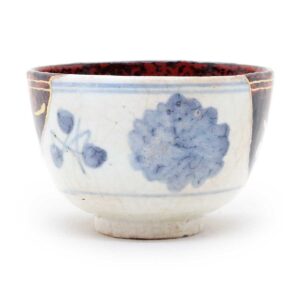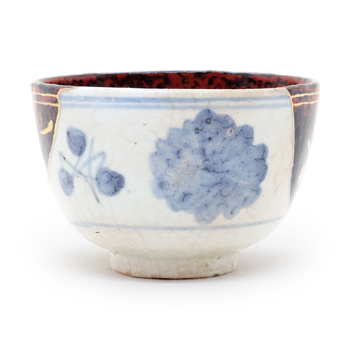
An old kiln in Hizen. Located at the foot of a mountain in Itanai, Yamauchi Town, Kishima County, Saga Prefecture. Kanegae Sanbei (a naturalized Korean, Ri Sanpei), who is recognized as the founder of porcelain in Japan, discovered the porcelain at Izumiyama, Arita in the early Kan’ei period (1624-44), built a kiln in the nearby Shirakawa Valley (Shirakawa, Arita, Nishimatsuura County) and began testing white porcelain, then opened the Hyakken kiln in Iwanokawauchi, and fired porcelain. Later, he moved to Arita and became a central figure in the development of Arita. There is some dispute about the dates of construction of the Shirakawa and Itanokawachi kilns, but the Shirakawa kiln was not fully oxidized to pottery, while both ceramics and porcelain were discovered at the Hyakumen kiln. The Shirakawa kiln was used for a short period of time, while the Hyakumen kiln was used for a longer period of time, and the name “Hyakumen” implies that there were many chambers in the climbing kiln. Looking at the Hyakuman kiln artifacts, we can see that there are almanacs in clay ware, and as the stone ware progressed from coarse to fine, the patterns of the underglaze blue paintings changed from powerful paintings to delicate detailed drawings. There are also celadon and black glazed porcelains. There is a wide variety of products, including rice bowls, cylindrical tea bowls, and even large plates. What is particularly surprising is that a pyrometer similar to a modern Zegel pyramid was already in use at this kiln, with celadon and white porcelain standing side by side on the column. The kiln was located in a different county from Arita, and transportation was inconvenient, so it was moved to a location closer to the raw material production area of Senzan, from which the Arita Sarayama was developed. (A Treatise on the History of Japanese Ceramics, History of Japanese Early Modern Ceramics, History of the Arita Pottery Industry, Essence of Ceramic Civilization, Study of Ceramic Crafts)



